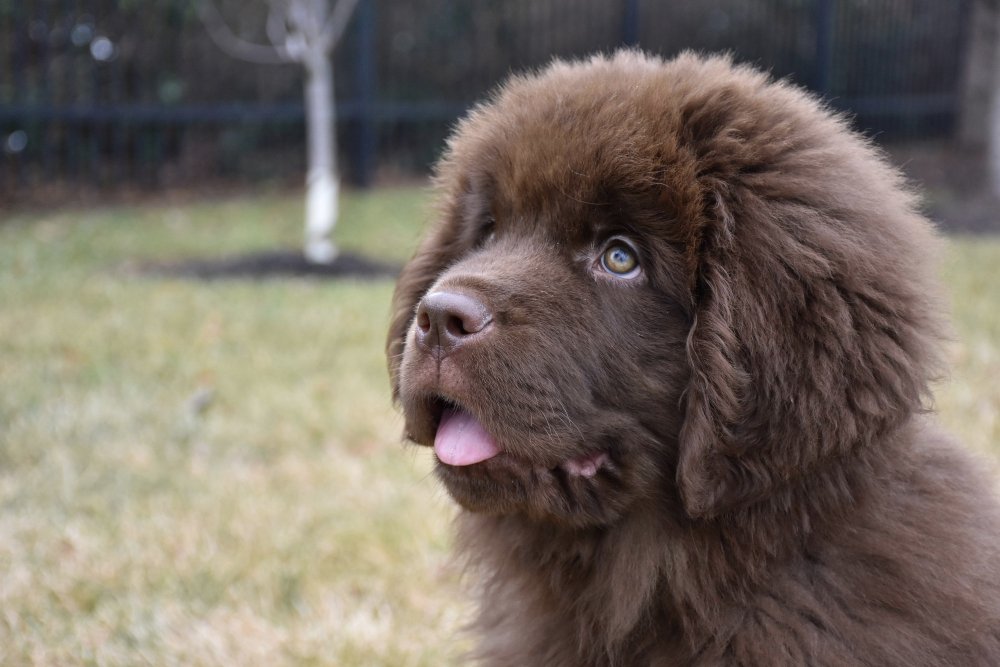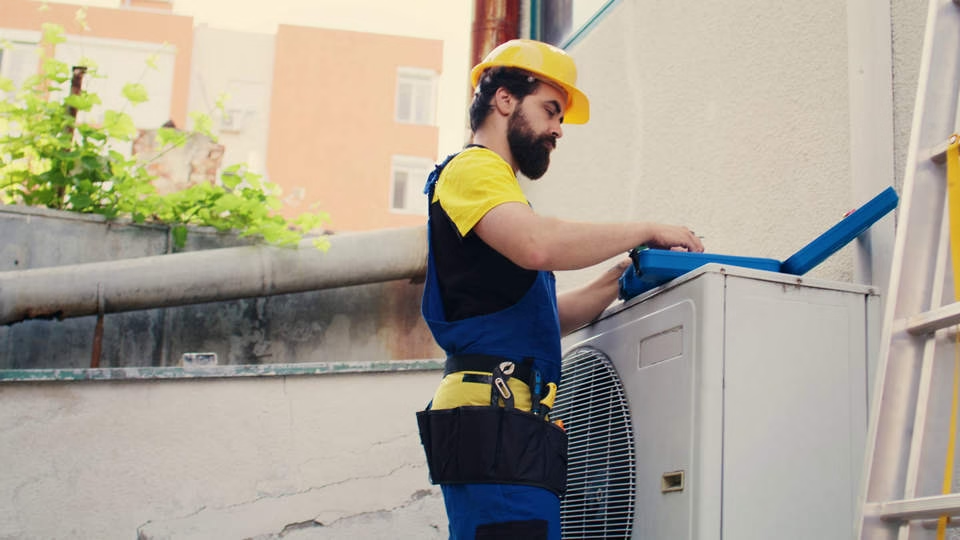Tibetan Mastiff: Guardian Dog Supreme
Table of Contents
Unveiling the Ancient Legacy: History
The Tibetan Mastiff, a sight to behold with its majestic size and thick double coat, boasts a history as rich and ancient as the Himalayas themselves. These loyal giants have guarded the Tibetan people and their way of life for millennia, earning them the moniker “guardian dog supreme.”
Origins in the High Mountains
Carved into the very fabric of Tibetan culture, the Tibetan Mastiff is believed to be one of the oldest dog breeds in the world. Archaeological evidence suggests their presence in the Himalayan region dating back thousands of years. Developed by nomadic tribes, these dogs were not simply companions, but essential partners for survival in the harsh Himalayan environment.
Guardians of Monasteries and Nomads
The Tibetan Mastiff’s impressive size and protective instincts made them ideal guard dogs for both livestock and property. They were entrusted with protecting nomadic settlements from predators like wolves, bears, and snow leopards. Tibetan monasteries also employed these loyal companions to guard their sacred grounds and residents.
Bred for Strength and Independence
The harsh environment of the Himalayas demanded a tough and resourceful canine companion. Tibetan Mastiffs were bred for strength, stamina, and the ability to think independently. Their thick double coat provided insulation against the frigid temperatures, while their powerful build allowed them to navigate the challenging terrain.
A Legacy of Loyalty and Protection
Today, the Tibetan Mastiff continues to be a cherished companion in Tibet and around the world. Their loyalty, protectiveness, and dignified presence remain as awe-inspiring as the Himalayan mountains they once guarded.

A Gentle Giant: Unveiling the Tibetan Mastiff’s Temperament
The Tibetan Mastiff’s imposing size and thick fur might lead some to believe they’re ferocious guard dogs. While their protective instincts are undeniable, beneath that powerful exterior lies a temperament that’s surprisingly gentle and loyal.
Loyal and Devoted Companions
Towards their family, Tibetan Mastiffs are known for their unwavering loyalty and devotion. They form strong bonds with their loved ones and enjoy spending time cuddled up on the couch or accompanying them on walks.
Guardian Instincts and Independence
Bred for centuries to guard livestock and homes, Tibetan Mastiffs possess a natural protectiveness. They are highly alert and watchful, always ready to defend their territory and family. This guardian instinct can manifest as aloofness with strangers, and they may require proper socialization from a young age.
Independent Thinkers
Their history as working dogs in the Himalayas instilled a certain level of independence in the Tibetan Mastiff. They are not known for blind obedience and can be stubborn at times. Training requires patience, consistency, and a positive reinforcement approach.
A Calm Demeanor
Despite their size, Tibetan Mastiffs are generally calm and dignified dogs indoors. They are not known for excessive barking but will alert their humans to anything unusual. Early socialization can help curb any potential territorial aggression.
A Balancing Act
The Tibetan Mastiff’s temperament is a beautiful blend of loyalty, protectiveness, and independence. Understanding these core traits is crucial for creating a harmonious relationship with these gentle giants. With proper training and socialization, they can be wonderful companions for experienced dog owners who can appreciate their unique personalities.
A Guardian Built to Last: Physical Characteristics
The Tibetan Mastiff is a truly awe-inspiring sight. These colossal canines are not just gentle giants; their physical characteristics embody the strength and resilience needed to thrive in the harsh Himalayan environment.
Size Matters: A Truly Massive Dog
The Tibetan Mastiff is one of the largest dog breeds in the world. Males can stand up to 28 inches tall at the shoulder and weigh a staggering 150 pounds, with females slightly smaller. Their imposing size alone serves as a natural deterrent to potential threats.
A Double Coat Fit for the Himalayas
The Tibetan Mastiff’s double coat is a marvel of functionality. The thick outer coat is straight and coarse, repelling water and snow. The dense, wooly undercoat provides excellent insulation against the frigid Himalayan temperatures. This double coat requires regular brushing, especially during shedding seasons, to maintain its health and prevent matting.
You May Also Like: Best Dog Food For Allergies
A Lion-Like Mane and Powerful Build
Adding to their majestic presence, Tibetan Mastiffs often have a mane of long fur around their neck and shoulders, particularly in males. Their muscular build and broad chest showcase their strength and endurance. These are dogs built for power and stamina, capable of traversing challenging terrain and guarding their territory with unwavering dedication.
A Range of Colors to Admire
While black is the most common coat color for Tibetan Mastiffs, they can also be found in various shades of brown, red, and even blue-gray. Some may have white markings on their chest or paws. Regardless of color, their thick fur and imposing size make them truly unforgettable canine companions.
Life with a Lion-Hearted Companion: Owning a Tibetan Mastiff
The Tibetan Mastiff is a loyal and majestic companion, but owning one is a significant commitment. Before welcoming one of these gentle giants into your life, it’s crucial to understand their needs and ensure your lifestyle can accommodate them.
Considering Your Living Space
Tibetan Mastiffs are not suited for apartment living. These colossal canines require ample space to roam and exercise. A house with a large, secure yard is ideal for them to expend their energy and express their natural guarding instincts.
Exercise Needs: Keeping a Gentle Giant Active
While not known for being overly energetic indoors, Tibetan Mastiffs still require daily exercise. Plan for at least an hour of walks or playtime each day to keep them mentally and physically stimulated. Activities like hiking or exploring new trails can be great options for these adventurous companions.
Grooming Requirements: Maintaining a Double Coat
The Tibetan Mastiff’s thick double coat requires regular brushing to prevent matting and maintain its health. Brushing a few times a week is recommended, with more frequent sessions during shedding seasons. Bathing can be done every few months or as needed.
Training and Socialization: Shaping a Gentle Guardian
Tibetan Mastiffs are intelligent but can also be independent thinkers. Early socialization and positive reinforcement training are essential to establish a strong bond and ensure good manners. Their natural protectiveness can manifest as aloofness with strangers, so socialization from a young age helps them become well-adjusted companions.
A Loyal and Dedicating Companion
Despite their size, Tibetan Mastiffs are known for their calm and dignified demeanor indoors. They form strong bonds with their families and enjoy spending quality time with them. Their loyalty and protectiveness make them wonderful companions for experienced dog owners who can appreciate their unique personalities.
**Owning a Tibetan Mastiff is a rewarding experience, but it requires dedication and effort. These gentle giants thrive in environments that can accommodate their size, exercise needs, and independent spirit. If you can provide a loving and stable home with ample space and activity, a Tibetan Mastiff can be a loyal and cherished companion for years to come.
Tibetan Mastiff (Comprehensive Owner’s Guide)

Publisher : Kennel Club Books; 1st edition (April 15, 2007)
Language : English
Hardcover : 155 pages
ISBN-10 : 159378287X
ISBN-13 : 978-1593782870
Item Weight : 1.25 pounds
Dimensions : 6.75 x 0.75 x 8.25 inches
Ancestral Duties: Working Traits of the Tibetan Mastiff
The Tibetan Mastiff wasn’t bred for lounging on the couch; their history is deeply rooted in hard work and guarding. For centuries, these loyal giants served as essential partners for the Tibetan people, fulfilling crucial working roles in the harsh Himalayan environment.
Guardians of Livestock and Homes
The Tibetan Mastiff’s size, strength, and alertness made them ideal guard dogs for protecting livestock from predators. In the Himalayas, they faced threats like wolves, snow leopards, and bears, and their booming bark and imposing presence were enough to deter many dangers. Tibetan nomads relied on these courageous canines to safeguard their herds and ensure the survival of their livelihood.
Defenders of Monasteries
Tibetan Mastiffs weren’t just protectors of property and livestock; they were also entrusted with guarding sacred grounds. Tibetan monasteries employed these loyal companions to keep their residents and sacred spaces safe from intruders. Their vigilance and unwavering loyalty made them invaluable guardians of these spiritual centers.
Independent and Resourceful
The Tibetan Mastiff’s working history instilled in them a sense of independence and resourcefulness. They were bred to make decisions on their own and adapt to challenging situations. This characteristic continues to be a part of their temperament today, requiring experienced owners who can provide proper training and guidance.
A Legacy of Protection
The working traits of the Tibetan Mastiff are a testament to their strength, courage, and unwavering loyalty. While their roles may have evolved over time, their natural guarding instincts and protective nature remain strong.
Beyond Guarding
While traditionally bred for working purposes, some Tibetan Mastiffs today excel in other areas like cart pulling or even search and rescue. Their intelligence, trainability, and physical prowess make them versatile companions with the potential to excel in various activities.

Caring for the Colossus: Health Concerns
The Tibetan Mastiff’s majestic size and impressive lifespan come with a responsibility – providing them with proper veterinary care throughout their lives. Like all breeds, Tibetan Mastiffs are prone to certain health conditions. Early detection and treatment are crucial for managing these conditions and ensuring your gentle giant enjoys a long and healthy life.
Common Health Concerns in Tibetan Mastiffs
- Hip Dysplasia and Elbow Dysplasia: These skeletal conditions cause abnormal joint development and can lead to pain, lameness, and difficulty moving. Regular veterinary checkups and maintaining a healthy weight can help minimize the impact of these conditions.
- Eye Problems: Tibetan Mastiffs are susceptible to various eye problems like entropion (inward rolling of the eyelid) and ectropion (outward rolling of the eyelid). These conditions can cause irritation and discomfort. Regular eye exams are important for early detection and treatment.
- Hypothyroidism: This condition occurs when the thyroid gland doesn’t produce enough hormones. Symptoms can include weight gain, lethargy, and skin problems. A simple blood test can diagnose hypothyroidism, and medication can effectively manage the condition.
- Bloat (Gastric Torsion): This is a life-threatening condition that can occur in large, deep-chested dogs like Tibetan Mastiffs. Bloat causes the stomach to twist, trapping gas and cutting off blood flow. Signs of bloat include excessive drooling, pacing, and abdominal distention. If you suspect bloat, seek immediate veterinary attention.
Outdoor Sign

Color: BEWARE TIBETAN MASTIFF GUARD DOG
Brand: Work House Signs
Material: Aluminum
Theme: Words & Quotes
Mounting Type: Wall Mount
Preventive Care is Key
Regular veterinary checkups are essential for Tibetan Mastiffs. These checkups allow your veterinarian to monitor your dog’s health, detect potential problems early, and recommend appropriate treatments. Early intervention can significantly improve your dog’s prognosis and quality of life.
Additional Considerations for a Healthy Lifespan
- Diet and Exercise: Providing your Tibetan Mastiff with a high-quality diet formulated for large breeds and maintaining a regular exercise routine can help them stay healthy and maintain a healthy weight.
- Supplements: Talk to your veterinarian about any joint supplements that may be beneficial for your Tibetan Mastiff, especially as they age.
- Dental Care: Regular dental cleanings are important for maintaining your dog’s oral health and preventing dental disease.
Working with Your Veterinarian
By understanding the potential health concerns of Tibetan Mastiffs and working closely with your veterinarian, you can ensure your furry friend receives the best possible care throughout their life. Remember, preventive care is key to a long and healthy life for your gentle giant.
The Price of Grandeur: Cost of Owning
The Tibetan Mastiff‘s majestic size and loyal companionship come at a cost. Before welcoming one of these gentle giants into your life, it’s crucial to consider the financial commitment involved. Owning a Tibetan Mastiff requires budgeting for various expenses to ensure their well-being and happiness.
Initial Costs: Bringing Home a Tibetan Mastiff
- Puppy Price: Tibetan Mastiff puppies from reputable breeders can range anywhere from $2,500 to $8,000 or even higher, depending on pedigree, bloodline, and breeder reputation.
Ongoing Costs: Keeping Your Gentle Giant Healthy and Happy
- Food: Tibetan Mastiffs are large dogs with hearty appetites. High-quality dog food formulated for large breeds is essential and can cost anywhere from $100 to $200 per month.
- Veterinary Care: Regular checkups, vaccinations, and potential preventative medications can add up. Factor in an annual budget of $500-$1000 for basic veterinary care. This cost may increase depending on your dog’s health needs.
- Preventative Care: Regular dental cleanings, parasite prevention medications, and joint supplements can add to the annual expenses.
- Training: While you can train your Tibetan Mastiff yourself, professional training classes can be helpful, especially for these intelligent but independent thinkers. Group training classes can range from $50-$100 per session, with private training costing even more.
Additional Considerations
- Pet Insurance: Consider pet insurance to help manage unexpected veterinary costs. Premiums can vary depending on your dog’s age, breed, and location.
- Grooming: While you can groom your Tibetan Mastiff yourself, professional grooming services can save time and ensure a thorough shed-control process. Budget for occasional grooming sessions, which can range from $100-$200 per session.
- Living Space: Tibetan Mastiffs require ample space to roam and exercise. If you live in an apartment, consider the additional costs associated with larger living quarters or frequent trips to dog parks.
The Joy of Owning a Tibetan Mastiff is Priceless
While the financial commitment to owning a Tibetan Mastiff shouldn’t be underestimated, the rewards are immeasurable. Their loyalty, companionship, and gentle nature bring immense joy to their owners. By carefully budgeting and planning for the ongoing costs, you can ensure a happy and healthy life for your furry friend.

Finding Your Perfect Gentle Giant: Breeders
The Tibetan Mastiff‘s loyalty, majestic presence, and gentle nature make them coveted companions. If you’ve decided to welcome one of these giants into your life, finding a reputable breeder is crucial. Responsible breeders prioritize the health and temperament of their dogs, ensuring you get a happy and healthy puppy.
Why Choose a Reputable Breeder?
Reputable Tibetan Mastiff breeders:
- Prioritize Health: They conduct thorough health screenings on breeding stock to minimize the risk of genetic conditions in puppies.
- Focus on Temperament: They raise puppies in a stimulating environment and socialize them from a young age, leading to well-adjusted and confident dogs.
- Provide Support: They offer guidance and support to new owners, answering questions and providing resources for raising a Tibetan Mastiff.
Finding a Reputable Breeder
- Kennel Clubs and Breed Associations: The American Kennel Club (AKC) and Tibetan Mastiff Club of America (TMCA) maintain lists of reputable breeders.
- Online Resources: Websites dedicated to Tibetan Mastiffs often have breeder directories. However, conduct thorough research on any breeder before contacting them.
- Word-of-Mouth: Talk to Tibetan Mastiff owners in your area or online communities for recommendations on reputable breeders.
Questions to Ask Breeders
- Health testing practices for breeding stock
- Temperament and socialization of their puppies
- Living conditions for their dogs
- Whether they offer post-purchase support
- Willingness to answer your questions openly and honestly
Responsible Breeders vs. Puppy Mills
Be wary of puppy mills that prioritize profit over the health and well-being of their dogs. These facilities often keep dogs in unsanitary conditions and don’t prioritize health testing or proper socialization. By choosing a reputable breeder, you’re not just getting a healthy puppy; you’re supporting ethical breeding practices.
Considering Adoption
Tibetan Mastiffs may also find themselves in rescue organizations or shelters. While adult adoption comes with its own set of considerations, these dogs can still bring immense joy to your life. Rescue organizations often have temperament evaluations on their dogs, helping you find the perfect fit for your lifestyle.
Finding your perfect Tibetan Mastiff companion takes time and research. By prioritizing a reputable breeder or responsible adoption agency, you can ensure a happy and healthy beginning for your journey with this loyal and majestic breed.
Fun Facts
The Tibetan Mastiff is a breed shrouded in history and legend. Beyond their impressive size and loyal nature, these gentle giants have some fascinating facts that add to their unique charm. Let’s delve into some fun facts about the Tibetan Mastiff that will surprise and delight you.
Ancient Origins
Believed to be one of the oldest dog breeds in the world, the Tibetan Mastiff’s lineage stretches back thousands of years. Archaeological evidence suggests their presence in the Himalayan region dating back to 2,000 BC.
Fit for Royalty
The Tibetan Mastiff wasn’t just a guardian of nomads and livestock; they were also revered companions of Tibetan royalty. These dogs were prized possessions, often gifted to visiting dignitaries as a symbol of power and status.
Strength Beyond Compare
The Tibetan Mastiff’s pulling power is legendary. They were traditionally used to pull carts laden with supplies across the harsh Himalayan terrain, showcasing their incredible strength and endurance.
A Double Coat Fit for Royalty
The Tibetan Mastiff’s double coat is not just for show; it’s a marvel of adaptation. The thick outer coat repels water and snow, while the dense undercoat provides exceptional insulation against the frigid Himalayan temperatures. During shedding seasons, one Tibetan Mastiff can lose enough fur to knit a whole sweater!
More Than Just a Guard Dog
While known for their guarding instincts, Tibetan Mastiffs can excel in various activities. Their intelligence and trainability make them suitable for tasks like cart pulling, search and rescue, or even competitive obedience with the right owner and training approach.
A Bark Worse Than Their Bite?
Despite their imposing size and guarding nature, Tibetan Mastiffs are generally known for their calm and gentle demeanor. Their booming bark serves as a deterrent, but they are not inherently aggressive dogs. Early socialization and proper training are still crucial for ensuring a well-adjusted companion.
The Price of Popularity
In 2014, a Tibetan Mastiff puppy in China was reportedly sold for a staggering $2 million, making it one of the most expensive dogs ever sold. This extreme price tag highlights the rarity and prestige associated with the breed in some parts of the world.
The Tibetan Mastiff is more than just a large dog; they are a living piece of history with unique characteristics and a loyal spirit. These fun facts offer a glimpse into the fascinating world of these gentle giants.

The Future
The Tibetan Mastiff, with its rich history and loyal companionship, continues to capture the hearts of dog lovers worldwide. But what does the future hold for this ancient breed? Let’s explore some of the efforts to ensure their preservation and consider their potential roles in the years to come.
Preservation Efforts
Despite their historical significance, Tibetan Mastiffs are still a relatively rare breed outside of their native Himalayas. Reputable breeders around the world are dedicated to preserving the breed’s health, temperament, and unique characteristics.
- Focus on Health Testing: Responsible breeders prioritize genetic health testing to minimize the risk of inherited diseases in Tibetan Mastiff puppies.
- Selective Breeding: Breeding practices focus on maintaining the breed standard while ensuring sound temperament and working ability.
- Record Keeping and Pedigrees: Maintaining accurate pedigrees is crucial for tracking bloodlines and preserving the breed’s genetic diversity.
Beyond Guarding: Exploring New Roles
While traditionally bred for guarding livestock and homes, the Tibetan Mastiff’s intelligence and trainability open doors to new possibilities.
- Search and Rescue: Their strength, keen sense of smell, and trainability make them potential candidates for search and rescue operations.
- Therapy Dogs: Their calm and gentle nature, with proper temperament testing and training, could make them suitable therapy companions.
- Working Farms: Even in modern times, some Tibetan Mastiffs continue to be valuable companions for working farms, helping to deter predators and protect livestock.
The Future is Loyal
The future of the Tibetan Mastiff appears bright. Through dedicated breeding practices, continued research, and exploring new roles, these gentle giants can continue to thrive for generations to come. Their unwavering loyalty, impressive size, and unique characteristics ensure their place as a cherished companion and a fascinating part of canine history.
Owner Responsibility
The future of the Tibetan Mastiff also depends on responsible ownership. Providing these dogs with proper training, socialization, and ample space to exercise is crucial for their well-being and for ensuring they remain good canine citizens.
By working together, breeders, researchers, and responsible owners can ensure a bright future for this loyal and majestic breed.



























